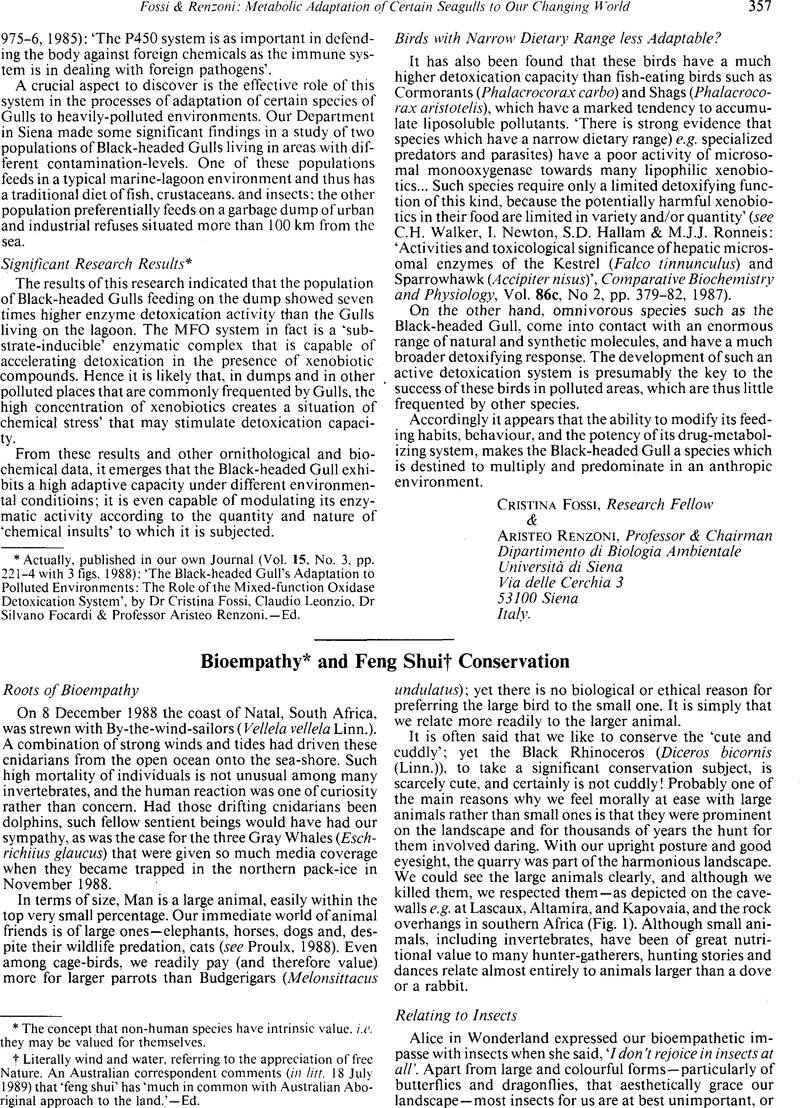No CrossRef data available.
Article contents
Bioempathy* and Feng Shui† Conservation
Published online by Cambridge University Press: 24 August 2009
Abstract
An abstract is not available for this content so a preview has been provided. Please use the Get access link above for information on how to access this content.

- Type
- Short Communications & Reports
- Information
- Copyright
- Copyright © Foundation for Environmental Conservation 1989
References
Callicott, J.B. (1986). On the intrinsic value of non-human species. Pp. 138–72 in The Preservation of Species (Ed. Norton, E.G.). Princeton University Press, Princeton, New Jersey, USA: xi + 305 pp.Google Scholar
Capra, F. (1983). The Tao of Physics, 2nd edn.Fontana, London, England, UK: 384 pp., illustr.Google Scholar
Davidson, J. (1987). Subtle Energy. C.W. Daniel, Saffron Walden, England, UK: 288 pp., illustr.Google Scholar
Proulx, G. (1988). Control of urban wildlife prcdation by cats through public education. Environmental Conservation, 15(4), pp. 358–9. 4 figs.CrossRefGoogle Scholar
IIIRolston, H. (1986). Philosophy Gone Wild. Prometheus Books, Buffalo, New York, USA: 269 pp., illustr.Google Scholar
Rossbach, S. (1983). Feng Shui. Hutchinson, London, England, UK: xvi + 169 pp., illuslr.Google Scholar
Samways, M.J. (1989). Insect conservation and landscape ecology: A case-history of bush crickets (Tettigoniidac) in southern France. Environmental Conservation, 16(3), pp. 217–8, 8 figs and 5 tables.CrossRefGoogle Scholar
Taylor, P.W. (1986). Respect for Nature: A Theory of Environmental Ethics. Princeton University Press, Princeton, New Jersey, USA: ix + 329 pp.Google Scholar
Underwood, T.B. (1956). Cherokee Legends and the Trail of Tears. Cherokee Publications, Cherokee, North Carolina, USA: 32 pp., illustr.Google Scholar


